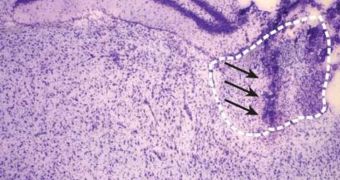A group of American investigators announces the discovery of a new possible locus for depression, in an area of the brain that previous studies overlooked. The finding was made after the scientists analyzed the brains of unsuspecting lab rats.
The small rodents were used as models for human depression, and it was discovered that neurons in their lateral habenula (LHb), a small region of the central brain, were hyperactive.
Experts discovered that animals which were depressed tended to have enhanced excitatory synaptic inputs applied onto neurons in this region of the brain, indicating that the LHb plays a role in depression.
Neuroscientists say that the primary consequence of this enhancement is the inhibition of neural pathways located behind the lateral habenula, such as the ventral tegmental area (VTA).
The latter is an area that plays an important role in the brain's reward system. The VTA is also known to contain a large population of neurons that are responsive to the neurotransmitter dopamine.
An important breakthrough came when the researchers were able to use a treatment technique analog to deep-brain stimulation (DBS) to treat and revered the depression-like symptoms in the rat models.
The team featured researchers from the Cold Spring Harbor Laboratory (CSHL), the US Department of Energy's (DOE) Brookhaven National Laboratory (BNL) and the University of California in San Diego (UCSD).
Details of the investigation were published online ahead of print, in the 24 February issue of the esteemed journal Nature. At this point, the research team is focused on analyzing the connections the LHb has with other areas of the brain.
It was discovered that it also affects a section of the brain called the Raphe nuclei, which are involved in producing the neurotransmitter serotonin. The chemical is also involved in depression in humans.
These nuclei may also play an important role in controlling levels of the chemical noradrenaline in the brain as well. Scientists are very interested in learning whether the LHb is involved in controlling all of these three neurotransmitters.
If the lateral habenula influences dopamine, serotonin and noradrenaline alike, then it could become a prime candidate for future research into treatments and therapies against depression in humans.

 14 DAY TRIAL //
14 DAY TRIAL //